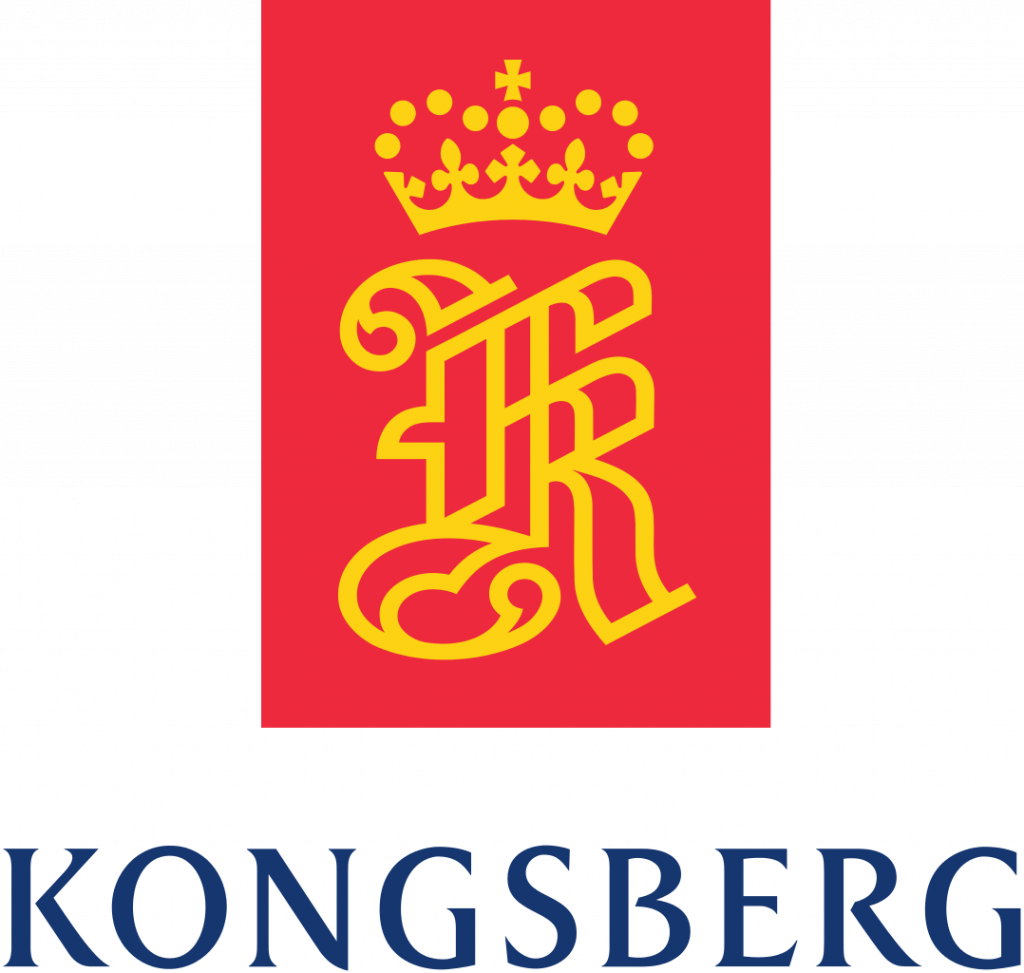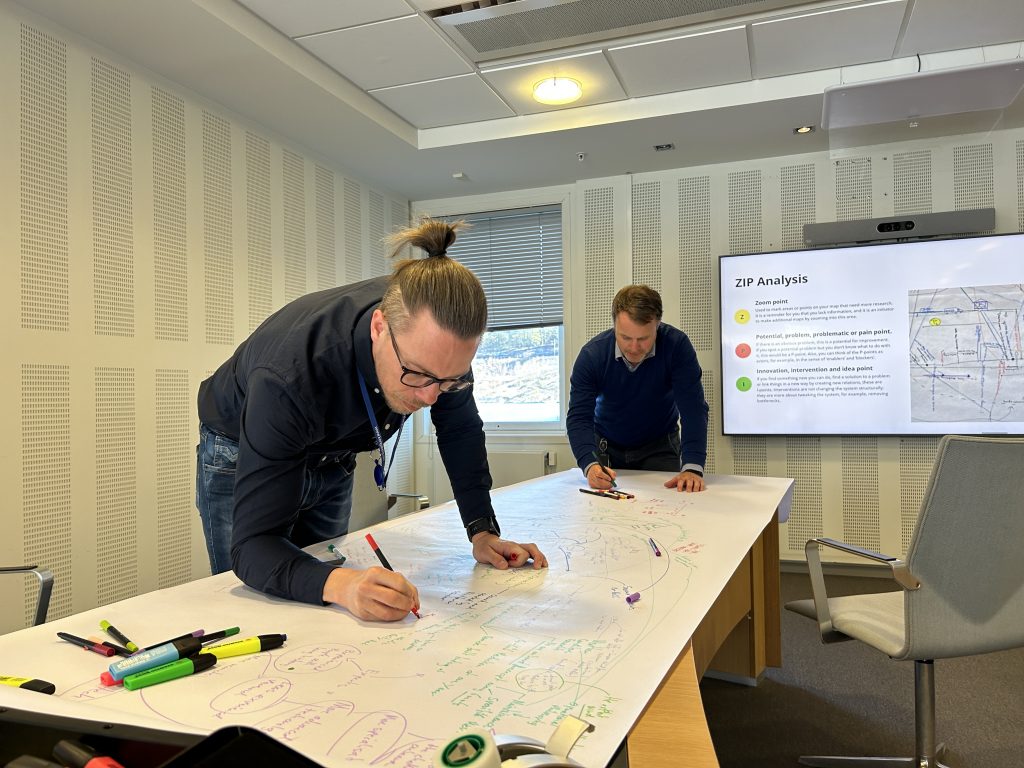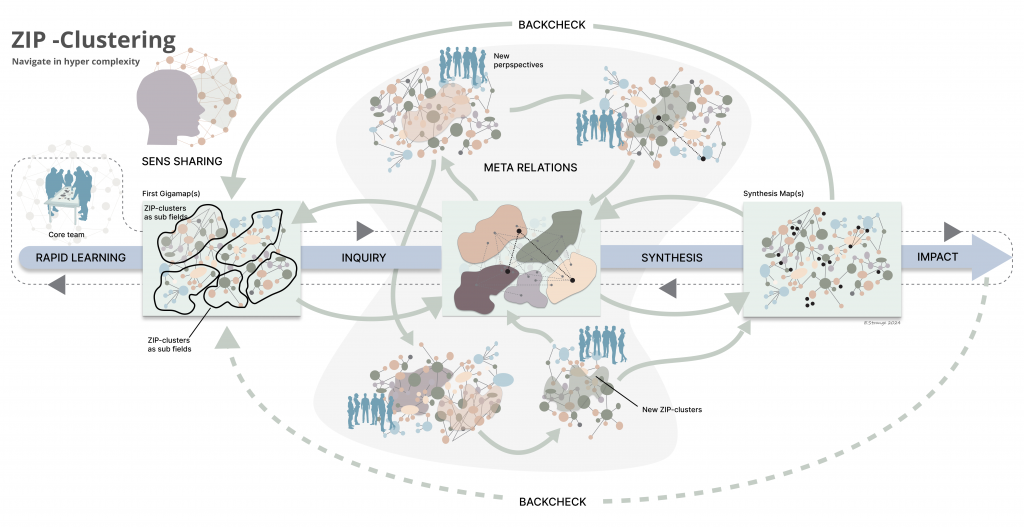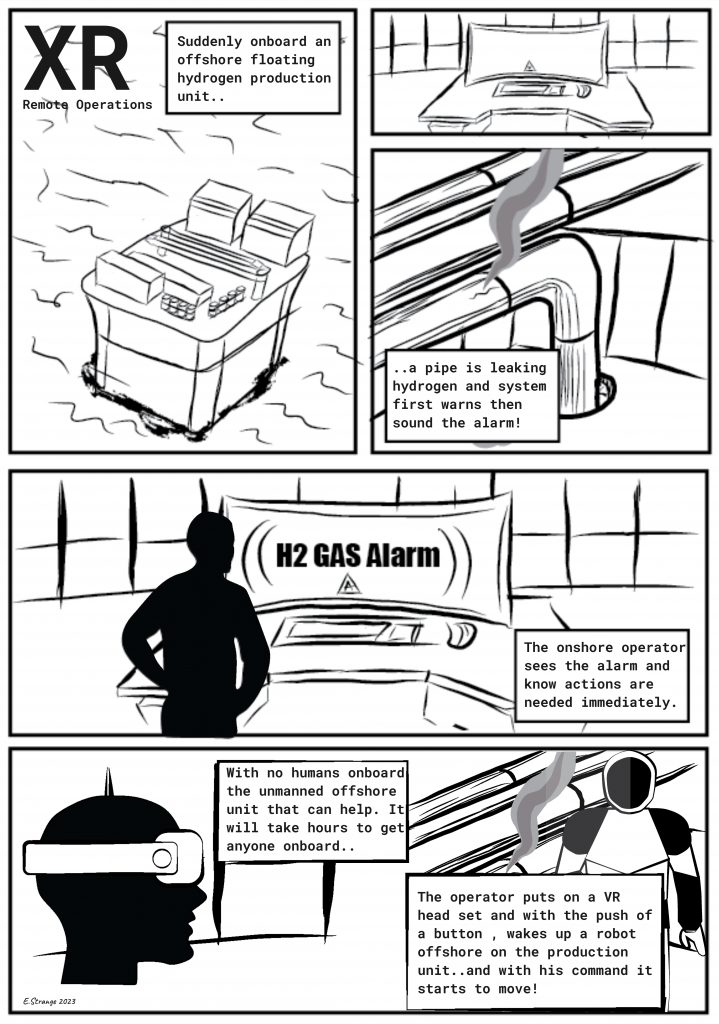
This landscape is constantly evolving, and the relationship between known and unknown knowledge, different actors, goals, and risks remains diffuse and complex. Within this context, SOD has a strength in facilitating, visualizing, and co-creating a comprehensive picture of the complexity. Our aim in H-SEIF 2 has been to learn through practice across multiple cases, rather than focusing on a single case. Most of the work has been tied to an Executive Master in System Oriented Design, where various workshops have been organized to understand and navigate complexity in different processes, and to foster learning around the application of SOD.

To achieve this, we have employed SOD’s practical and design-oriented approach, with a particular focus on Gigamapping in workshops. Participants with different perspectives have come together to create rich visual maps of complexity in sociotechnical systems. This work has included the exploration of Augmented Reality in maritime operations, remote maintenance of autonomous offshore hydrogen platforms through Extended Reality (XR), digital twins, robotics, and the future of autonomous vessels. These rich visualizations (Gigamaps) have been used in combination with ZIP analysis to navigate complexity and design actions for further research and development. Throughout the master’s work, ZIP analysis has particularly been challenged and further developed, incorporating new methods and techniques that enable managing a high degree of sociotechnical complexity. Therefore, the combination of ZIP analysis and Gigamapping has been central to this effort.


Through H-SEIF 2 and the master’s work, we have gained a deeper understanding of SOD and how this approach can be used to address complexity in digitalization. This has been particularly relevant for social, human-oriented, environmental, and market aspects. Through multi-perspective workshops using Gigamapping, we have managed to elevate discussions, create a richer shared understanding, and jointly navigate complexity. This approach allows for the identification of key actions that are difficult to predict with traditional methods. We have also uncovered needs and actions beyond conventional technical problem-solving, requirements setting, and business perspectives. The experience with SOD has provided us with a toolkit that can complement Systems Engineering and contribute to a holistic and strengthened process from early-phase to operation. This is a practice we aim to further develop and integrate more closely with Systems Engineering to create a stronger, holistic approach to complex sociotechnical maritime systems in the future.

